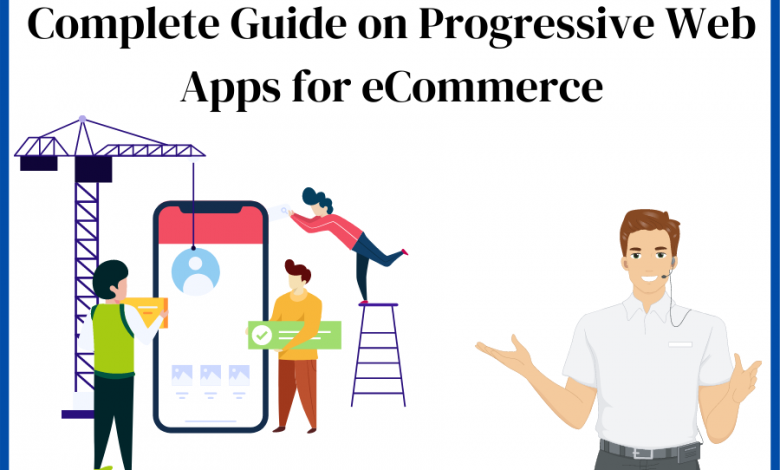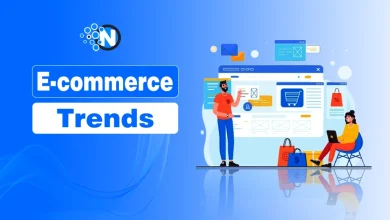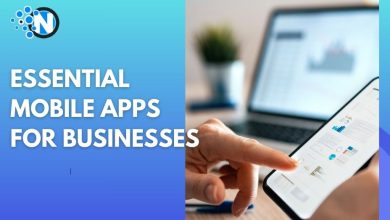
Since its inception in 2005, many businesses have benefited from Progressive Web Apps (PWAs). Whether it is an enhanced user experience or an extensive user base, businesses derive tons of benefits by using PWAs. These advanced versions of web apps have also proved to be useful for eCommerce businesses. By using PWAs, eCommerce businesses can increase revenues with more conversions and sales. Many companies like Twitter, Alibaba, and Trivago are some of the live examples of the advantages from PWAs in terms of growing revenues and doubled conversion rates.
The PWA success stories from these business giants have inspired many entrepreneurs to opt for PWA web app development services and build their own progressive web apps to boost business and conversion rates. You can take advantage of a PWA for your eCommerce business and derive more sales and revenue. If you are eager to know more about Progressive Web Apps then this is the right place for you. We will discuss everything about PWA here with an in-depth understanding of this awesome new technology in web development.
What is a PWA?
You can think of a PWA or Progressive Web App as a combination of web app and native mobile apps. It is a kind of website built using web technologies with the look and feel of a native app. So, it is in the middle of a web app and native app because it is not just a web app and not completely a native app, it has attributes of both. Just like a native app, you can install a PWA on your device and just like a web app, it loads in a web browser but in a dedicated window. Many reasons are behind the success of PWAs that include their features, capabilities, and performance. You can choose a reputed web development company to build a top-notch PWA for your business.
What are the attributes of progressive web apps?
A progressive web app comes with lots of functionalities that give them an edge over regular web apps or native apps. We are going to discuss the key attributes of progressive web apps below.
Installable
Just like you install a native app on your mobile device or desktop, you can also install a progressive web app on your device. In fact, installing a PWA is much easier than installing a native app because it doesn’t have a complicated installation process. The installation of the PWA eliminates download time in a browser and it is easily accessible from a device’s screen. Hence, you can use a PWA like a native app on your device while taking all the benefits of web apps.
App-like experience
This is what makes a PWA unbeatable because it runs in a separate browser window and in full-screen that offers the look and feel of the native apps on your devices. These apps are built on the application shell model and do minimum refreshes making them an exceptional solution for businesses that combine the best of both web apps and native apps.
Discoverable
Originally a PWA is a website that got the appearance and features of an application. Consequently, it is easily discoverable in the search engine results pages. And, this is one of the biggest advantages of progressive web apps. They are exposed to far more audiences than native apps.
Shareable/Linkable
The linkability of a progressive web app is one of its principal advantages that makes progressive web app framework development successful. Since every PWA has a URL that one user can use to share with others as well as bookmark the app. The app can retain or reload its state when sharing or bookmarking the app.
Progressive
As we know PWA ‘P’ stands for progressive which means a PWA harnesses all the attributes of the users’ device or browser, augment progressively, and must function on all devices seamlessly. Hence progressive attribute of a PWA makes it an advanced web app with some excellent functionalities.
Safe and always fresh
Progressive web apps are served through HTTPS. So, these web apps are very secure. Further, they always remain up-to-date because they are updated automatically and load fresh content every time they run.
Connectivity independent
A progressive web app can run in a low connection or even without an internet connection because it caches the content that was loaded on the first launch. So, it offers an offline experience to users.
Re-engageable
One more key advantage of PWAs is that these apps possess many device-related features and one such example is push notifications. They allow retailers to send notifications to ensure to re-engage users with the app.
What are the components of a PWA?
Every progressive web app has a technical structure that works behind the scene to make such an app operable. You can create outstanding PWAs today by using bare web technologies. You can also use a progressive web app framework like AngularJS, ReactJS, Ionic, etc to build a robust PWA. In this section, we will focus on the most important components of a PWA and discuss them.
Service Worker
This component works like a middleman between the app/browser and the network/server and processes network requests (receive requests from the browser and forwards to the server, similarly, receives a response from the server and sends to the browser). Service workers are behind caching of the content when a PWA loads for the first time. So, it offers offline functionality for users. Also, due to the caching pages load very speedily. Push notifications are also a task that is performed by the Service Worker. It also does background data synchronization.
Manifest File
It is one of the most important components of a progressive web app that contains a lot of important information about your app. This file is saved as manifest.json and contains metadata related to a PWA. This data includes the app’s name, icon, launching URL, and more. With the use of the manifest.json file, developers can control the display aspect as well as the appearance of a progressive web app.
Application Shell
It is the requirement of HTML, CSS, and JavaScript that powers a user interface. While a native app includes an application shell in its distributable, websites usually request this over the network. Progressive web apps fill up this gap between websites and native apps by loading the application shell’s assets and resources in the cache of a browser.
Benefits or progressive web apps
The following are some benefits of using a PWA for your business.
Better user adoption
PWAs are lightweight and easy to install as well as offer an app-like look and features, so more users can adopt these apps as compared to native apps.
Boost user engagement
These apps support push notifications that provide a potent means of re-engagement resulting in boosted user engagement.
Reduced development cost
If you want a native app, you may have to invest in different apps for Android, iOS, and other platforms. But a single PWA can be installed and run on almost every device. So, they reduce the development cost.
High-performance apps
Progressive web apps are way better than native apps when it comes to performance. This is because PWAs can load almost instantly due to caching of data.
These are just a few benefits of what a progressive web app can offer to both businesses and end-users. However, all of these benefits add value to a business and help them get an edge in the market over competitors. From connectivity to speed, PWAs are quite an attractive alternative for resource-intensive and slow native apps that cannot offer a top-of-the-line user experience.
Final note
Businesses are always looking for new ways to enhance their services and maximize their profits. Websites and apps are playing a key role for businesses in achieving those goals. However, from the past few years, they seemed to be inefficient to this end. But with the advent of progressive web apps, new hopes are gaining momentum. A PWA bridges the gap between a website and a native app because it combines the experience of both platforms. Hence PWA development has become popular around the world. If you also want to build a PWA then look for the right technology. The company can help you to create a robust web app with the latest PWA development trends.
Author Bio
Emily White is an accomplished web developer currently working at CSSChopper which is an eminent ecommerce web development firm. She is a passionate web developer and prefers writing blogs and articles in her idle time. She loves to write quality and informative content for her audience when she is away from her system.




